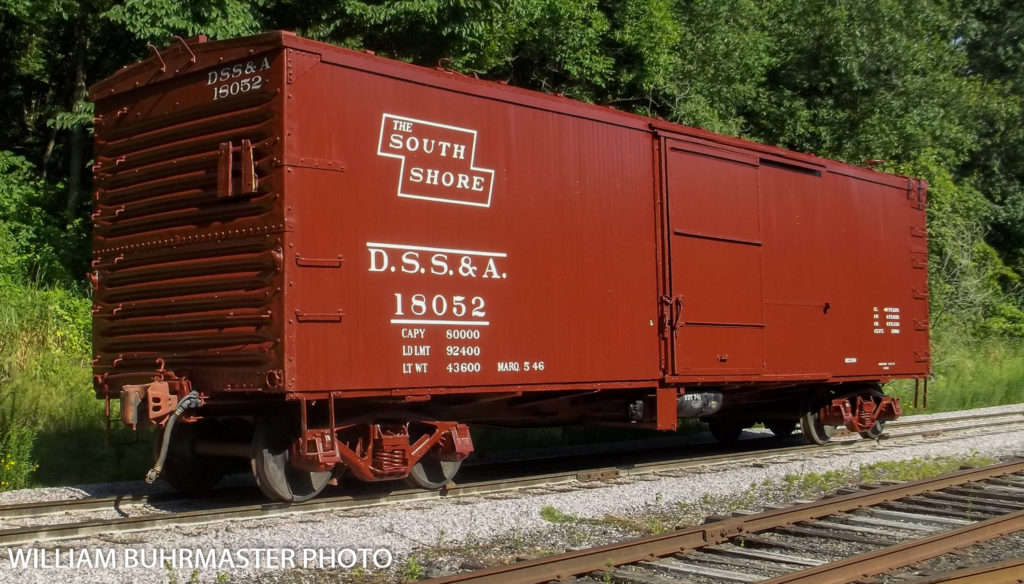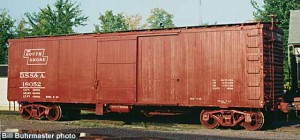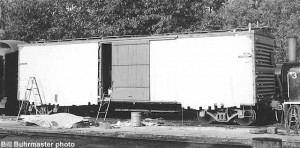Boxcar, American Car & Foundry, March 1916

In 1908, Henry Ford introduced the low cost advantages of assembly-line production to the American public with his Model T. The common person now could afford an automobile. However, intercity roads were poor, therefore, the railroads provided transportation of these automobiles to the dealers. In March 1916, the New York Central System took delivery of 1,000 double door automobile cars built by the American Car & Foundry Co. These cars were built in AC&F Lot No. 329-B and numbered 258000 through 258999. The cars had a 40-ton capacity, steel underframe, double wood-sheathed side wall construction, and a staggered double side door to accommodate the bulky automobiles. The Duluth South Shore & Atlantic purchased 100 of these cars from NYC in July 1935, and renumbered them 18000 through 18099. In May 1946, the South Shore rebuilt 69 of these into single door box cars. The remaining 28 cars in the series were never rebuilt. Around this same time, all the 18000 series cars had their original Vulcan “T” section trucks replaced and “K” brakes updated with Type “AB.” DSS&A #18052, ex-NYC #258905, was one of these original double door automobile cars converted to a single door box car.
DSS&A #18052 was converted to work service as a tool car for wrecker support in 1952, and renumbered to #821. After the consolidation of the South Shore with the Soo Line in 1961, the car was assigned Soo work service #D-821. Mid-Continent acquired the car from Soo Line in 1966. During 1988, #18052 was restored and relettered as it appeared during its revenue service life as a single door box car (1946 through 1952). It has been used in freight train service during special events at the museum ever since.
The Duluth South Shore & Atlantic Railway was formed in 1886 through the merger of several smaller railroads. The mainline of the railroad extended from Duluth to Sault Ste. Marie with a branch line extending into the Keweenaw peninsula. Control of the railroad soon passed into the hands of the Canadian Pacific Railroad and much of the traffic was directed to the CP at the Sault Ste. Marie gateway. On January 1, 1961, the DSS&A ceased to exist when it was officially merged into the newly organized Soo Line Railroad.
The American Car & Foundry Co., of Jeffersonville, Indiana had its beginnings as the Ohio Falls Car Co., being established during the Civil War. Ohio Falls endured several bankruptcies and the Panic of 1873 to become a major Midwestern car builder. Early on the firm promoted use of Southern Yellow pine for car construction due to its superior strength. By the 1890’s Ohio Falls’ volume had reached $3 million worth of cars annually. In 1899 Ohio Falls was consolidated into the industry giant American Car & Foundry Co. (AC&F). The Jeffersonville plant was closed by AC&F in 1945 although most of the buildings survive, utilized for a variety of industrial and commercial purposes.


